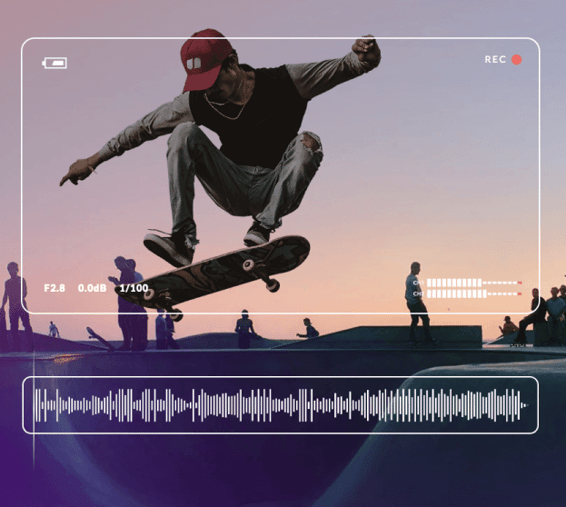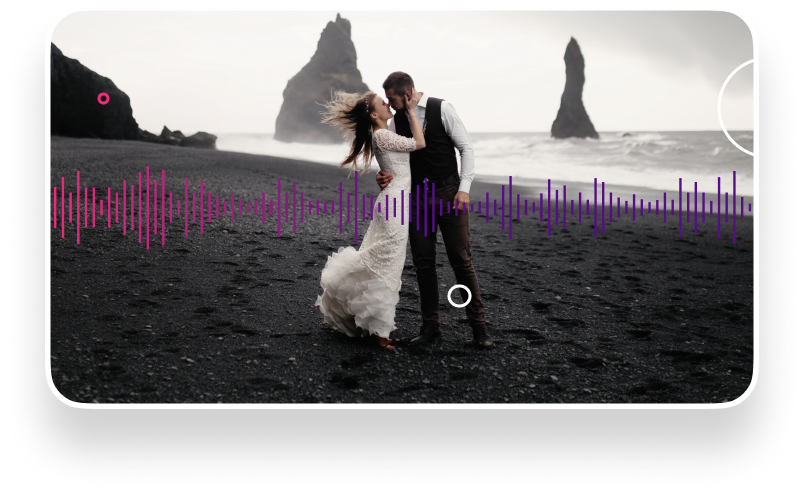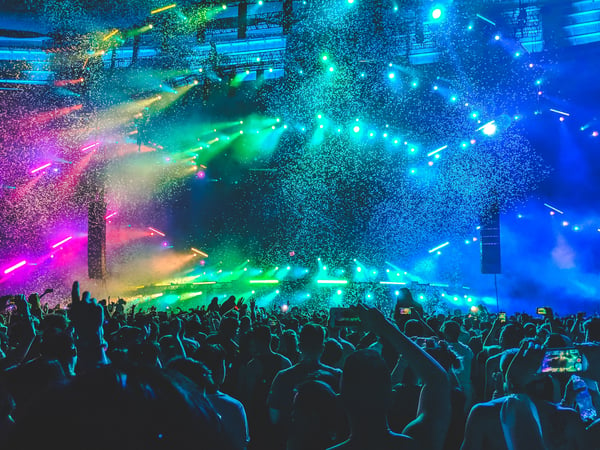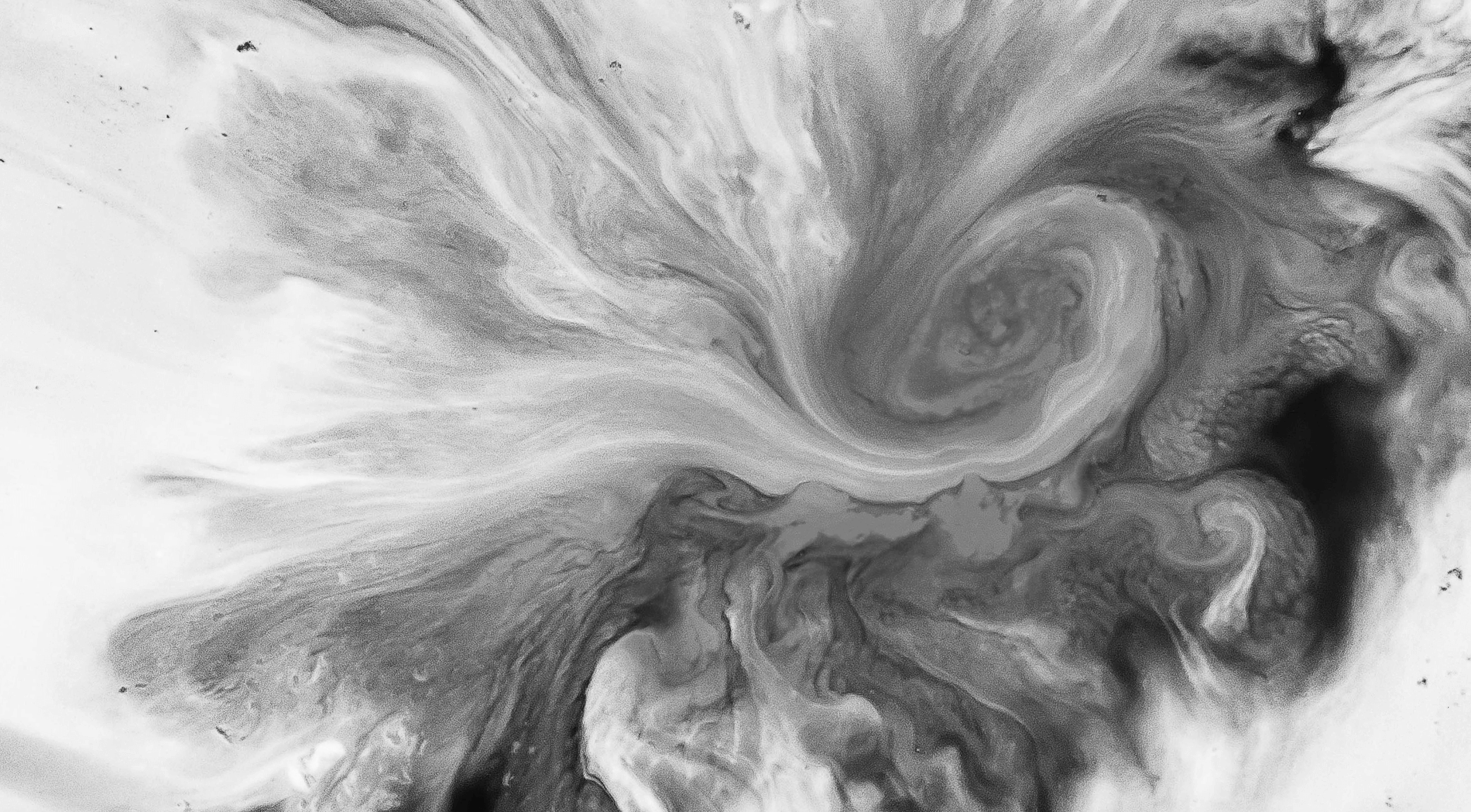Welcome to Outstanding
Royalty Free Electronic Music






Listen to our Best Royalty Free Electronic Music
We know the right song can make or break your project. That’s why every track in our library is vetted by award-winning producers. Hear for yourself. We've curated a playlist with our best royalty free electronic music.
Looking for something different?
We got you. From classical to hip hop to indie, our audio library contains thousands of outstanding tracks. Use one of our 13 filters or check out other curated playlists to find what you need in minutes.
BROWSE THE FULL CATALOG
Dead Simple Licensing
Never worry about licensing again. With Soundstripe, your membership covers the cost for every song license. Just find the right track, download the file, and get a custom license. That’s it. No channel or media-specific fees, no recurring royalties, ever. Here’s more good news: you have unlimited licenses. Go ahead, download as many songs as you want.
Everything You Need To Know About Royalty Free Electronic Music
At one point in time, people thought of electronic music as a strange underground movement. Public perception ranged from “music from people who can’t play instruments” to “music of the future,” and most people completely overlooked this niche genre.
But we can look back and see that electronic music has influenced the most successful artists from each of the last five decades. Whether you think of big hair bands, the birth of hip hop music, and even the disco generation, electronica played an important part in musical history.
Nowadays, pieces of electronic music infuse every other genre. You’ll find loops and synthetic instrument samples in orchestral music and Broadway musicals. Pop, lo-fi, and even country artists are grabbing heavy beats and electronic elements into radio hits.
As a result, we might not always appreciate the revolution that was electronic music and how it influenced global music culture as a whole.

Main Components Of Electronic Music
Not to sound reductive, but the only “requirement” of electronic music is the use of electronic instruments. These could be synthesizers, modulators, or even just filters on an electronic keyboard. Fans expect artists to produce music by altering or creating digital sounds, and that means this is a very wide and diverse genre.
Sure, that description could apply to a lot of modern music. Aren’t all songs recorded digitally, mixed by a producer, and then distributed across the internet? How is that any different from electronic music?
The evolution of music has started to blur the lines between a lot of genres, no matter how traditionally separate they were. But there are some key differences when it comes to EDM — you’ll know a techno, dance, or house song when you hear it, even if it’s a remix of a popular song you heard on the radio yesterday.
When John Williams sits down to score a movie, he isn’t just thinking about the on-screen action or even his musical ideas for the project. He’s also thinking about the orchestra — how large it needs to be, which instruments it should include, does it need a choir, etc.
When an electronic musician sits down to start a project, she isn’t just thinking about how to remix something, when to add a drop, or how many beats to layer in. She’s thinking about which digital sounds, synths, and samples will work. And she might even end up creating brand new sounds and filters that no one has ever heard before.
Electronic music doesn’t follow any hard rules. The most successful artists and DJs are songwriters, foley artists, and producers — they write songs, create unique sounds, and mix and master everything. That makes the genre a fairly unique part of the music industry, and that has led to it having a rebellious “underground” kind of feel.
Another big part of electronic music is the beat. Unlike genres that rely on drums, electronic music separates percussion into a variety of specific sounds that can be layered, mixed, or replaced. That beat will be a driving force in the song, but rather than an instrument that fills out the audio space, percussion becomes a metronomic tool, creating new layers of audio levels and dimensions to the track.
To summarize this as briefly as possible, “electronic music” is less a specific style of sound and more the process of creation. There are no musical standards — there’s no traditional instrument, meter, or vocal style. (In fact, many of the top EDM artists use vocals as sparingly as possible.)
As you might expect, that makes the genre a little more accessible to people who want to make music. You don’t need to play three instruments, understand sound engineering, or graduate from a music conservatory — all an aspiring electronic artist needs is music software (like FL Studio or Ableton) and a head filled with ideas.
What Is Electronic Music?
Sure, we can look at the common components of electronic music and create a formula in our heads. But if we’re determining electronic music as the process of creation, then how does that formula hold up?
So then what is electronic music? Is it a type of music, or a specific recording format? Does it need electronic instruments, or modified sound files from actual musicians?
All of those answers could be “Yes” or “No,” which is why it’s so hard to pin down the answer.
Electronic music might be a song that uses electronic instruments, or electronic systems as a way to modify the sound. Or it could be the process of performing a song live with synthesizers, taking other people’s music and EDM-ifying it. Some classically trained cellists create electronic music, and some self-taught composers learn to orchestrate classical music with electronic dance music software.
Music is a weird thing, and that’s why it is so interesting to research the history of genres, how people define subgenres, and how musicians (both past and present) draw inspiration to create their work.
At the end of the day, we can’t give you a firm answer here, no matter how hard we try. (And trust us — we did our best.) Then again, music probably wouldn’t be an artform if it was all a bunch of people coloring between the lines with the same templates.
And What Is EDM?
Electronic dance music, or EDM, has the same bones and structure as any other type of electronic music. The only difference worth noting is that electronic dance music is usually used to describe “club music” or “house music” — the kind of stuff you’d (kind of obviously) dance to, and usually as a curated experience from a DJ.
While the elements of electronic music are a little more freeform, we can break EDM into two quintessential pieces: a repetitive and loud beat, as well as a synthesized backing track.
But electronic dance music isn’t limited to clubs (or discoes if you’re from Europe), even if that’s the most common association we make. The truth is that a huge piece of EDM’s lasting success and influence on pop music actually comes down to one another place you’ll often hear this subgenre.
We’ve gone over the building blocks of electronic music. However, the obvious difference with electronic dance music is that it is a style literally created to encourage dancing. And what’s the easiest way to assemble large groups of people so you can hit them with beats that subconsciously compel them to dance?
Electronic music festivals, of course.
When Did Electronic Music Festivals Get So Popular?
To continue our history lesson, the concept of electronic music festivals really got going in the 80s and 90s. But that’s a short — and not especially helpful — explanation.
Remember how you don’t need a lifetime of musical expertise to write electronic dance music? How it’s a genre more about modifying or synthesizing music rather than composing a Beethoven-level symphony?
Well, that was a big change that would impact the entire music industry. With such a low barrier of entry, anyone could create and/or perform electronic dance music. Suddenly house music and EDM were building a global audience.
Places like France and Germany evolved from “underground electronic music capitals” to “Meccas of EDM raves,” attracting tens of thousands of people each year. Electronic music festivals became cultural hubs for these areas, much in the way that Coachella became a phenomenon in North America.
The constant improvement of technology transformed these small (and sometimes secret) gatherings into electronic music festivals. And now these events are less about the music experience and more about overall entertainment, complete with headliner artist names and pop star guest appearances.
The popularity of electronic music festivals is pretty much tied to the growth of EDM. But the earliest beginnings of both have become almost like folklore, with legends of underground events and unpopular-but-influential artists that goes back decades.
Of course, we could also shift to another popular question that is just as hard to answer: With so many pieces involved in the genre, who invented electronic music?
Who Invented Electronic Music?
Tracing the origins of any music style is difficult, because something as all-encompassing as a genre rarely comes from one person. And the same is true for electronic music.
The creation of electronic music really branches into a few categories. Electronic instrumentation had to come first, and the award for “Earliest Example of an Electric Instrument” goes to the theremin in 1928.
(Technically it was the Telharmonium in 1897, although that functioned more like a radio than what we’d think of as an instrument. But we’ll talk more about that in the next section.)
While the theremin began life as part of a Russian search for proximity sensor detectors, it quickly became an ingenious way to transform electronic signals into the same familiar, recognized notes that came from standard instruments.
(Fun fact: One electronics enthusiast started building theremins in the 1950s, then used that experience to create the most highly regarded — and still widely used in 2021 — electronic synthesizer ever. But we’ll talk about Robert Moog in the next section too.)
But we also have to expand our definition. Electronic recordings were first used in the 1930s, with musicians Paul Hindemith and Ernst Toch creating songs by layering recorded instruments.
That led to musician John Cage adjusting the playback speed to modify those sounds, and that led to the idea of French musique concréte that combined mechanical and natural sounds into a singular composition.
So no, we can’t really say who invented electronic music. It was a layering effect of the work of engineers, musicians, and hobbyists over an entire century that led to 21st century EDM.
Then again, the idea of layering feels perfectly appropriate as the origin story of electronic music.
Early Examples Of Electronic Music
If you had to think about the origins of electronic music, your mind probably jumps to Daft Punk and the huge spike of EDM throughout Europe. Maybe it goes further back, to the 1980s and the heavy synth sounds of Journey.
But it’s easy to forget that the disco hits of the 70s leaned heavily on electronic elements. And the idea of musical synthesis (creating and layer notes to produce new sounds) dates back a whole lot earlier than you might think.
This might sound impossible, but the first known electronic music was patented in the late 1800s. Thaddeus Cahill developed something called the “Telharmonium” in 1897:
To be fair, this “instrument” didn’t work. The Telharmonium was built to pump music into telephone receivers — basically the first ideation of “elevator music” or Muzak — and it did its job a little too well. Cahill’s instrument interfered with phone service, even for people not interested in using their telephones as a radio.
But that invention continued to inspire inventors and engineers. In 1964, Robert Moog revealed the Moog synthesizer. This invention blended an electronic keyboard with an analog mixing board so musicians could create music and modify the sound all at the same time.
From the very first notes, you get goosebumps. This is an almost primal electronic sound, and it’s easy to see why Moog synthesizers became the gold standard for electronic music for the next 50 years and counting.
Unlike other instruments, synthesizers give musicians full and completely unchecked control over their sound. It allows people to completely release their creativity, and that kind of mysterious and otherworldly sound is why electronic music has become such a powerful influence in other music genres.
Growing Popularity Of Electronic Music
Electronic music has evolved from this strange underground culture into a mainstream powerhouse. That process really got started in the 1990s when electronic artists from around the world began experimenting with new sounds and varieties.
In other words, this was when we saw new branches of the genre with things like trance, house, ambient, and the earliest versions of dubstep. Different countries began to develop unique styles, and electronica really took off as a global phenomenon in the early to mid 90s.

A huge factor in the rise of electronica was its accessibility. The sudden arrival of personal computers and home internet access brought the music world together like never before.
Pair that with early examples of music-making software and digital audio workstations (DAWs) and the picture starts to come together. Suddenly anyone could explore electronic music and infuse it into other genres, which led to more diversity and even regional variations of popular styles.
And that brings us to today. Listen to pop radio for more than a few minutes, and you’ll start to hear just how influential electronic music has become.
Songwriters like Taylor Swift and Ed Sheeran have replaced their traditional acoustic sound for electronic instruments. Popular EDM artists have begun producing music that features up-and-coming or familiar artists. And artists like David Guetta have become a global phenomenon by fusing electronic music and pop rock.
The Lasting Influence Of Electronic Music
Electronic music has reached new levels of popularity, and you can chalk that up to a handful of evolutions.
We see more subgenres than ever before. Platforms like Spotify and YouTube provide opportunities for artists around the world to share their music, whether they’re a new indie musician or a veteran performer. And the software to produce music has become more accessible than ever.
On one hand, that has allowed top artists — like Deadmau5, Skrillex, and Avicii — to reach a level of international fame far beyond what legends like Daft Punk ever experienced. And this is all in the last decade, compared to the past 100 years of electronic music production.
On the other hand, electronica has become part of the cultural zeitgeist. The club scene has become increasingly popular, and most DJs have begun blending dance music with pop songs. That kind of “homebrew” music changed how people think of some songs, and that motivated successful artists (and the record labels who market them) to push into this new style.
Perhaps the most incredible measure of electronic music’s rise is that the genre is one of the oldest in the world, but it somehow feels very new. The adaptability, creativity, and accessibility mean that electronica will continue to influence musicians and listeners for years to come.
Using Electronic Music In Video Projects
Of course, as a content creator, you’re not just interested in why electronic music is so awesome. Chances are good that you’re looking for a way to get songs that you can use in your next video, whether that’s a commercial project or for your YouTube channel.
But there’s one big problem: music licensing.
More importantly, copyright law protects any artist’s intellectual property. The only way to grab a song from THE CHAINSMOKERS or Zedd is to pay for a one-time-use license.
Once you have approval, you can legally drop that individual track into a specific video project for a specific purpose. But even the process of getting approval can be a little confusing.
Copyright ownership is usually spread across a dozen different people. Sure, the performing artist is the name we all know. But it’s possible that songwriters, recording artists, and different people within the record label can all claim partial ownership of that song.
And if you want to license the song, you’ll need approval from them. Every. Single. Person.
Reaching out to artists and legal teams can take up to six months. And the more popular the song, the more people you’ll have to contact, the more money you’ll have to pay, and the higher the royalty amount that will be expected.
Yes, in addition to paying for a license, you’ll also have to negotiate royalty payments. And that means that you will share a predetermined percentage of any revenue your video generates.
Think of it this way: If the video will generate income for you (either now or in the future), then the copyright owners will most likely expect to share in that revenue. After all, music plays a big role in video content, so they’ll claim that their song directly impacted the video’s success.
Music licensing has been a part of the industry for a long, long time. And while you might decide to just avoid this entirely, it’s important to remember that the penalties for copyright infringement can be enough to ruin companies and sink content creators’ careers.
In other words, you’re probably going to need an alternative that doesn’t involve thousands of dollars (for music licenses) or a date in court (for copyright infringement). That’s where royalty free music can help.
How Royalty Free Electronic Music Can Help
Finding good electronic music is easy. Finding good electronic music that you can legally put in your video projects is much, much harder. And unless you have thousands of dollars to pay for one-time-use music licenses, you still might not be able to use your favorite bangers.
Royalty free electronic music makes that easy for you. These songs avoid the traditional record labels, which means content creators and filmmakers can license radio-quality music for a fraction of the price and with half the effort of browsing thousands of mediocre free songs.
Here at Soundstripe, we wanted to take that to the next level and find a way to make royalty free music even more accessible. So we built a subscription service: With a monthly or yearly subscription, you’ll get unlimited access to thousands of songs from professional artists and mixed by award-winning engineers and producers.
Finding the perfect electronic song for your next video doesn’t have to be a nightmare. You shouldn’t have to spend hours browsing through garbage music, fundraising the cash to license it, and then waiting weeks or even months to have your license application approved.
Royalty free electronic music can be available to you right now. It’ll make your production process easier, cheaper, and faster, and you’ll never have to worry about copyright claims or infringement ever again. And the best part is you can still get the awesome EDM beats you love.


Have questions? Give us a call
855.224.0847
Soundstripe - Unlimited Music for Video
© 2017-2020 A Product of Soundstripe, Inc
Nashville TN



